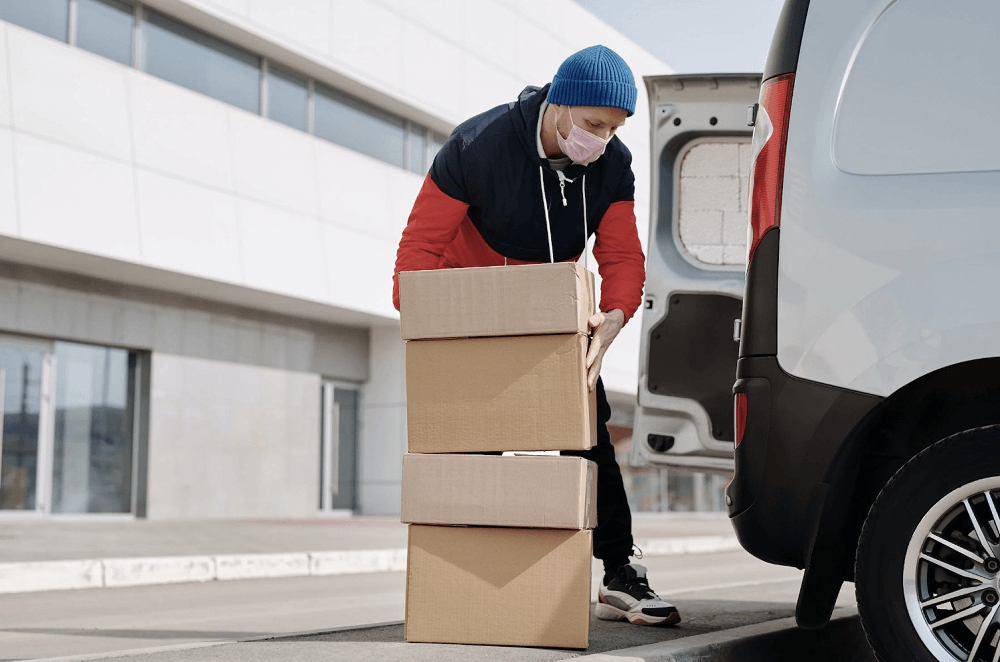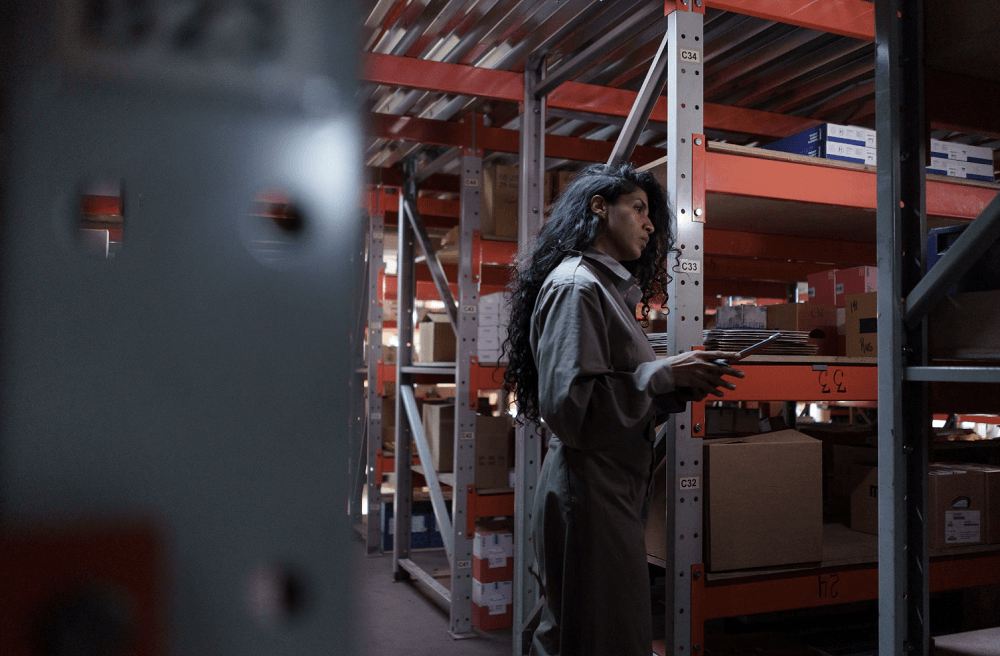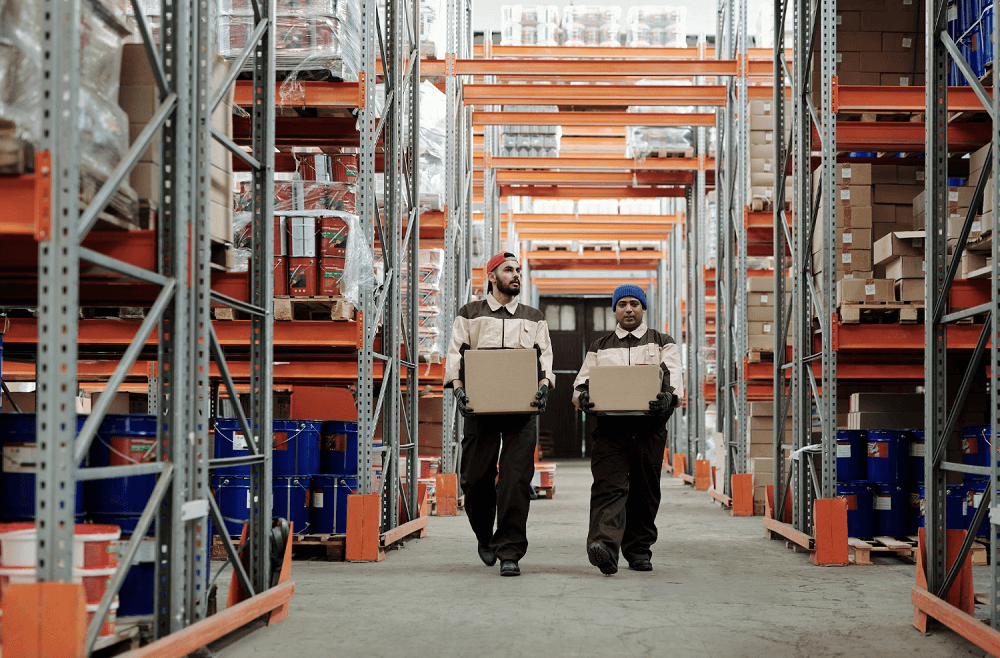
by Sam Franklin | October 02, 2022 | 19 min read
The ultimate reverse logistics guide – How it works and how you should deal with it
Get fundedLast updated: October 06, 2022
The rise of eCommerce has seen a 33%increase in returns over the past decade. Based on the current industry forecasts, returns are expected to hit $573 billion by the end of 2022. Because of this, eCommerce businesses need to have an effective reverse logistics process due to the high volume of returns and cost of processing returns. If the reverse logistics process is not well managed, it can lead to operational challenges.
To reduce the costs of returns, every business needs to have an efficient process for processing, organising, shipping, and handling returns from the customer back to the manufacturer.
For most organisations, handling reverse logistics can be challenging. This is because, traditionally, products on the supply chain move from the manufacturer to the customer. However, as a business, you also need to factor in the cost of returns in your products’ prices and have a system to ensure the company is not making losses.
In this article, we’ll look at what reverse logistics is, why it's important for businesses, the types of reverse logistics, and the benefits and downsides.
Table of contents
- What is reverse logistics?
- When is reverse logistics used?
- What’s the difference between reverse logistics and traditional logistics?
- How reverse logistics works
- Managing the 5Rs of reverse logistics
- Types of reverse logistics
- What are the benefits of reverse logistics?
- Challenges of reverse logistics
- How to optimise reverse logistics
- Conclusion
What is reverse logistics?
Reverse logistics is a value-added process that involves moving the product backwards in the supply chain. This type of supply chain management starts at the end customer and goes back to the distributor, seller and manufacturer. This process can also include processes where the customer returns products for resale, refurbishing, recycling, or to get credit for a new product purchase.
Any management or process after the sale of the product involves reverse logistics. For instance, if a product is defective, the customer will return it, and the manufacturer will organise shipping, testing, dismantling, repairing, recycling and disposal. The same process applies if your business needs to re-ship products.
When is reverse logistics used?
Statistics show that at least 30% of products ordered online are returned compared to 8.89% in brick-and-mortar stores. So businesses use reverse logistics to move goods from their final destination to another part of the supply chain and potentially to the suppliers. These products may be returned because they have reached the end of their service life or they don’t fit the customer’s needs.
The objective of reverse logistics is to recoup the value of the products and dispose of them. Most companies use reverse logistics to ensure repeat customers, build customer loyalty and minimise losses related to returns. If your customer is able to return the items without any hiccups, they are more likely to come back and shop again from your store instead of your competitors.
What’s the difference between reverse logistics and traditional logistics?
According to the Council of Supply Chain Management Professionals glossary, traditional logistics is defined as “The process of planning, implementing, and controlling the efficient, cost-effective flow of raw materials, in-process inventory, finished goods, and related information from the point of origin to the point of consumption for the purpose of conforming to customer requirements.”
The traditional logistics process flows from the manufacturer, distributor, and retailer to the consumer. On the other hand, reverse logistics is where the product will be sent back to the distribution centre and the relevant customer information transferred to the return processing centre.
Additionally, it can happen at any point in the supply chain, either to the original supplier or one step back in the chain. For instance, a distributor can return products back to the manufacturer if they have any defects.
As an eCommerce business, you must have a properly developed reverse logistics system as part of the order fulfilment process. A well-designed supply chain will be responsive to changes and will handle all your reverse logistics requirements.
How reverse logistics works
If you want to design a reverse logistics system for your business, it involves various plans and controls. While some companies handle the work in-house, others prefer to outsource this work to third-party logistics companies.
Additionally, the reverse logistics process varies across different industries. For instance, in the food industry, companies use reverse logistics for rejected food shipments. These rejections can cause logistical issues in the supply chain due to delays that cause food spoilage. In the beverage industry, beverage production companies use reverse logistics to recoup the value of empty containers by reusing them. This process will include transportation, management of shipping loads, and cleaning the empty containers.
Steps for reverse logistics
Although the process differs from business to business, there are some basic steps that most companies follow.
Process the return
The product return process begins when the customer signals that they want to return a product, when a container is ready to be re-used, or when an item has hit the end of its life. During this step in the supply chain, you can authorise the return and check the product’s condition.
To make your reverse logistics easier, you can use smart software for the assessment of the product’s condition and authorisation of the product to move it back into the supply chain. It also includes product replacement for a customer.
Decide on the next steps
When the returned product gets to your centralised processing centre or warehouse location, you should inspect it and decide the next steps. You can determine its return category, whether it needs to be resold, fixed, recycled, or refurbished before returning to the market. If you have optimised reverse logistics, you can know where the product needs to go before it arrives. Once you have decided on the next steps, it becomes easier to implement the return process.
Repair/refurbish the product
On many occasions, the returned product can be refurbished or repaired based on the issue that led to the return. This process can be as simple as cleaning a piece of equipment and as complex as replacing damaged components. This will help you return the product to its new state. However, if you determine that the item or equipment can’t be repaired after the review, you can sell any sellable parts.
Sell item as new
If the returned product is still in as-new condition, it can be sold. However, this depends on the nature of the product and whether it can be repackaged. During the sale process, the product can either be sold at a discount or at full price.
Managing the 5Rs of reverse logistics
Most businesses link reverse logistics with just handling returns; however, it’s broader than that. When the supply chain becomes more complex, you have to apply metrics to help you track success and improvement of their reverse logistics process. In order to reduce losses and streamline the reverse logistics process, your business needs to manage the 5Rs of reverse logistics.
1. Returns and exchanges
One of the ways to deal with returns and exchanges is to find ways to avoid them. You can do this by selling high-quality items, shipping the right items to the customer, creating clear product descriptions, and creating processes in your supply chain that will help you avoid product damage during shipment and storage.
Once you have incorporated measures to prevent returns and exchanges, you can provide your customers with a seamless process to return items when needed. Create a reasonable product return policy for your reverse logistics system, depending on the scope of your operations. This is important to ensure customer satisfaction.
When developing this reverse logistics process, ensure that you have a solid plan on how to receive, inspect, and test products. In addition, you should have a tracking system to monitor where your products are as they move backwards in the supply chain.

2. Reselling returned items
If an item is returned by one customer, you can still sell it to other people. You can make money for your business by processing and reselling returned products. In most cases, customers return products not because there is something wrong with them but because they are not satisfied. Reverse logistics will help you with this process.
The secondary market in the U.S. alone is worth more than $15 billion annually. Your company can use the same format and leverage these items for additional profits. Therefore, when items are returned within your supply chain, ensure that you tag them and update them in the system. You can then test them, repackage and return them to inventory for resale.
3. Repairs
Instead of replacing a product, some customers don’t mind having a broken item fixed and repaired. Additionally, you can lower the cost of returns by repairing some items and returning them to the supply chain for sale. To manage such repairs, some businesses have field repair centres where products are inspected, repaired, and sent back to circulation as part of the reverse logistics system.
If the product has a minor issue, the item can be sold as reconditioned or as-new. These products can be labelled as repaired and sold at a discount based on the defects. After repairs, they are repackaged and listed for sale at a reduced price.
4. Replacement
Some customers return items because they need a replacement with a different version. This is why it's important to give your customers seamless return and exchange options to boost their experience and increase retention rates. Companies such as Amazon start shipping customer product replacements as soon as they get a notification that you’ve made a return.
To make the reverse logistics process easier, you can use quality fulfilment software to help manage the return process and supply chain. This software can track incoming and outgoing inventory, ensuring that your business does not make losses.
5. Recycling and disposal
Research by McKinsey shows that one in four consumers are now paying attention to environmental issues when shopping. Because of this, companies are also prioritising sustainability to attract more customers. One way they do this is by recycling products, using recyclable packaging materials,and making sustainable choices.
Apart from meeting customer needs, recycling can also help the company reduce costs. Therefore, some companies offer reusable packaging that customers can return for reuse. Transportation and reverse logistics companies pick up used packaging to return to the company warehouse, which streamlines the supply chain.
If your items don’t qualify for recycling, they can be disposed of. Whichever process you choose, the items can still be brought back into the supply chain system. This allows you to track all the products and use this information and data to make better business decisions in the future.
Types of reverse logistics
There are different types of reverse logistics components that you need to know. Let’s look at them.
Returns management
This type of reverse logistics involves avoiding returns and physically managing the items that have been sent back to the company. Your returns management process should be fast, straightforward and controllable. This allows customers to judge the company’s return flow and policies. Ensure that your eCommerce has a clear returns policy that makes the return process much easier.
Additionally, you also need to have a plan on which returns the company will accept. This also includes ensuring that the item lands in the correct hands and warehouse.
Return Policy and Procedure (RPP)
For your reverse logistics process to be seamless, you need to share your returns policies and procedures with the customers. These policies should be consistent for all items and visible. If customers can return your items without any issues, they are more likely to order more products from your business.
Remanufacturing or refurbishment
The other type of reverse logistics management includes refurbishing, remanufacturing, and reconditioning. This process involves rebuilding and repairing products before they get back on the shelves. If a returned product is not heavily used, the quality department can inspect and determine whether it can be repaired and resold.
Returned items should not be automatically scrapped. Some may still be in good condition or have damaged packaging. In this case, the company can repackage the item and sell it again. In addition, some items require reconditioning, which involves separating the product, cleaning, and assembling it again. The quality department can advise on products that require such processes to save the company money.
Unsold goods
Apart from the customers, reverse logistics can also be initiated by retailers, especially if there are unsold goods. The retailer can send back items to the distributor or manufacturer if the items haven’t been sold or the inventory has become obsolete.
Packaging management
Companies use this type of reverse logistics when they want to reuse packing materials to reduce business waste and disposal.
Delivery failure
Reverse logistics also happens when there is a failed delivery. When this happens, delivery drivers return the items to the sorting centres. From here, the products will be sent back to the point of origin. In some cases, some centres have employed staff to determine why the delivery failed, correct the issue, and resend the product.
End-of-Life (EOL)
A product reaches its EOL when it stops working or is no longer useful. If the item is not meeting customer needs, it can be replaced by a better version using reverse logistics. Most manufacturers recycle or dispose of products that have reached the end of life. Because they are not useful, these products can lead to environmental challenges for most manufacturers and nations.
Repairs and maintenance
Based on the product agreement, it’s the customer’s or company’s responsibility to repair or maintain the equipment or products. Therefore, when the item has an issue, the customer can send it back to the warehouse for repairs using reverse logistics. On other occasions, the business sells returned items to customers after they have been repaired. Most of these products are labelled and are sold at a lower price.
Rentals and leasing
Once an item or equipment comes to the end of the rental or lease contract, the company can recycle, remarket, or redeploy the product by relying on reverse logistics.
What are the benefits of reverse logistics?
Implementing reverse logistics in your business is beneficial to both the company and the customers. Here are some of the reasons why reverse logistics is important.
Cost savings
With the rise of eCommerce, product returns have become too prevalent. Therefore, as part of your eCommerce warehouse managementsystem, you need an efficient reverse logistics system to save your company money. Your business can eliminate some expenses by being well prepared for reverse logistics. If you don’t plan for returns, you might incur more transport, storage, and distribution costs when items are sent back into your supply chain.
Another way the business can save money is by being able to repair returned items for resale. Therefore, instead of disposing of them and working on new items, they can spend money on repairs and put the products back in circulation.

Greater customer satisfaction and retention
Customers are more likely to be loyal to your brand if you can fix a problem with their products. You need a flexible and transparent return policy to make it easier for your customers to return items. Additionally, you should be fast in delivering a resolution whether the customer needs a repair, replacement, or credit for the item. If you have a reverse logistics plan in place, you can react much faster and keep your customers satisfied.
Create more value
Reverse logistics helps businesses in retaining their value. If you repurpose goods that may have been lost as waste, you can generate more streams of income to add to your overall revenue. If you have reverse logistics systems like recycling, your products become more valuable because they can be retrieved and used multiple times.
Greater sustainability
Recycling your returned products is beneficial financially as well as environmentally. If you ask your customers to return items that are no longer of use, you can ensure that they are disposed of sustainably. This is also good for your business reputation because more customers are more willing to buy from companies that are sustainably minded.
Additionally, it will protect your business from getting fined for not following environmental regulations. A 2021 Deloitte survey of UK consumers showed that about a third of customers stopped buying items from a brand due to sustainability or ethical concerns. About 34% of the consumers chose brands with environmentally sustainable practices or values.
Gain business insights
Reverse logistics management provides valuable data for your business which you can use to your advantage. You can identify the number of items being returned, the specific items customers send back and which customer segments return items more often. This data can be used for strategic decision making on the future of the business. In addition, you can get data on whether some products are working for the market and if your return policy is working properly.
Good brand image
If your business has improved reverse logistics and returns processes, it enhances your levels of brand image. Customers will be satisfied and talk to others about your brand. You’ll also enjoy positive recognition if you recycle end-of-life products. Companies like Apple have perfected this art by encouraging customers to return old devices to the store and get a new device at a discount.
Challenges of reverse logistics
Retailers and manufacturers can encounter several challenges when setting up an effective reverse logistics system. Here are some of the most common challenges.
Complex system
Managing a streamlined return process for a business requires a lot of work, especially if you have both an online and offline store. Businesses have to balance the shipping process, track all the products, process the returns quickly and determine what to do with each return without making losses.
To ease the process, businesses need to predict the items that are most likely to be returned and have a plan to process them fast. Additionally, this reverse logistics process can be improved by using the appropriate technology and software. This ensures that customer returns are entered into the inventory management system in real-time.
With reverse logistics, the flow is bi-directional. Managers need software that’s automated and tracks every step. Once the infrastructure is added, the managers still have to monitor and evaluate the reverse logistics process to ensure that it's efficient.
Optimisation of the return process
When developing your reverse logistics, you need to balance these elements:
Maintaining the company’s bottom line
Attaining the sustainability goals
Delivering top-notch returns processes
Your reverse logistics process has to focus on these three factors equally for the process to be successful. However, it's challenging if your company does not have accurate data on past returns. If you have the right data, you can calculate:
Cost of shipping
Cost of refurbishing and recycling items
Return rates
Value of returned goods
Many businesses fail to consider these factors, which can lead to the failure of your reverse logistics program.
Product collection
One of the major challenges, especially for small businesses, is whether to organise product collection for returns or ask customers to return the items themselves. If the customer sends the item, it’s cheaper and much easier for the business, but it creates a poor customer experience. If you use this strategy, fewer products will be returned to your supply chain, and your reverse logistics system will fail.
On the other hand, if you choose to collect the returns, this will increase the business costs but boost customer satisfaction. Therefore, before structuring a return policy, you need to determine the best option for the business and customer, even if it involves using third-party shipping providers at a discount. Consider both cost options when developing a reverse logistics plan.
How to optimise reverse logistics
To optimise reverse logistics, businesses need a cohesive strategy that accounts for cost and efficiency. Here are the eight strategic ways to optimise your system.
1. Review and revise return policies
You should regularly review and revise your return procedures and policies. This will help you identify any issues. They should be clear and transparent if you want your company's reverse logistics process to be competitive.
2. Review vendor agreements
Update and review vendor agreements frequently to reduce cases of overstocking and return of stock. Vendor agreements state how much product you should receive; therefore, they need to be revised periodically to ensure that you are not stocking up on more inventory than you need. By collaborating closely with your suppliers, you’ll have a smooth, integrated supply chain.
3. Track products forward and backwards
Linking your raw materials to the finished items and customer orders makes it easy to trace everything in case of a product recall. With a good tracking system, you can find the issue and recall the specific product or raw materials with the problem.
4. Utilise supply chain data
Collecting data on the returns will help you understand why some items may be returning more than others. This can help you adjust product design and reverse logistics processes.
5. Outsourcing
Some companies can optimise their reverse logistics departments more efficiently by outsourcing the function. This can be a more cost-effective strategy depending on the size of the company. Outsourcing can provide you with better infrastructure and save the company money. However, on the flip side, it can be a disadvantage because you won’t be in control of all the processes.
6. Centralised return centres

You can optimise your reverse logistics better by having centralised return centres that allow you to sort products and identify the next step for each of the returns. If you don’t have the resources for separate return centres, you can still use the same eCommerce warehousing system you have in place. You can dedicate a portion of the factory or warehouse for returns processing.
7. Evaluate logistics and transportation
Review the transportation process for your traditional and reverse logistics to determine whether there are areas you can save time and money. Evaluate whether you can integrate some reverse logistics processes and transit. For instance, you can organise for your delivery trucks to drop new deliveries as they pick returns from customers to save money.
8. Automation of reverse logistics
Automation has become a key factor in supply chain management. You can streamline your reverse logistics operations by using cloud-based software to track orders, handle refurbishments, and provide business insights. Although automation upfront costs can be high, they save the business money in the long run.
Conclusion
Reverse logistics is a vital part of the supply chain. Companies are looking to build customer satisfaction and reduce costs by ensuring that the returns process is streamlined and effective. Whether your business is a startup or a large enterprise, you need to implement a reverse logistics system. You can boost its operation by using a third-party logistics provider or relying on good inventory management software.
Written by

Sam founded his first startup back in 2010 and has since been building startups in the Content Marketing, SEO, eCommerce and SaaS verticals. Sam is a generalist with deep knowledge of lead generation and scaling acquisition and sales.


